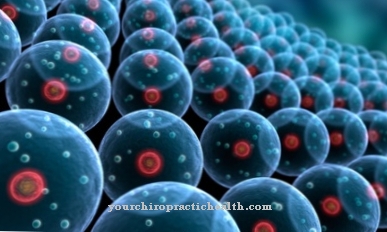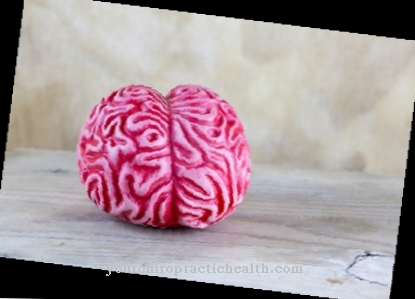The initiation is the first step and thus the preparation for translation, transcription and replication. Together, these phases essentially lead to gene expression. Initiation also plays a role in pathophysiology in relation to diseases such as cancer.
What is initiation?

During translation, copied genetic information leads to the synthesis of proteins within the cells of living organisms. In contrast, transcription is the synthesis of RNA using DNA as a template, from which the RNA is created.
Like translation, transcription is an essential part of gene expression. In genetics, replication is the production of DNA copies. Each of the processes mentioned consists of several phases. The first phase of both replication and translation and transcription is initiation. Initiation is the starting process for all components of gene expression. As a rule, the initiation is preceded by the creation of a so-called pre-initiation complex.
The initiations of transcription, translation and replication differ in the nature and purpose of their sequence. In addition, the phase of initiation differs with the life form and is therefore different in eukaryotes than in prokaryotes.
Function & task
A pre-initiation complex is formed to start the translation. This complex consists of the so-called 40S subunit of the ribosome and the initiator tRNAMet. It also includes GTP and initiation factors. The combination of these elements recognizes mature mRNA at the 5 'end, can bind them and examine them in a subsequent analysis step from the 5' → 3 'direction.
These processes take place until the complex to be investigated recognizes a so-called start codon or AUG. Upon recognition of this codon, the 60S ribosomal subunit binds to it, causing the initiation factors to dissolve. Only then can the mRNA translation take place in the sense of translation.
The gene-expressive step of transcription in all eukaryotes also depends on a pre-initiation complex, which consists of different transcription factors. Factors such as TFIIA, TFIID, TFIIB and TFIIF are involved in the complex.
The template of the DNA is fed to the catalytic center of RNA polymerase in order to facilitate the formation of a first phosphodiester bond. The actual transcription is only initiated through this partial step. In the initiation phase of the replication, the replication of the DNA is again triggered by breaking the DNA double helix. This break-up takes place at a specific point in the DNA and is implemented with the help of Helicase.
After labeling with primase, a polymerase is found on the broken DNA and accumulates. At the beginning of replication, helical DNA is present in the cell in a disordered, circular or linear arrangement and is also twisted. In order to be replicated, the eukaryotic DNA must first be untwisted, which leads to an increasing twisting of the DNA double strands. During the initiation of replication, the cleavage of the DNA strands also takes place.
For the initiation of the replication phase, the so-called replication origin is required, on which the starting point depends. At this origin, the hydrogen bond between the bases of the single strands is broken during initiation. Following the opening of the strands, priming takes place. A piece of RNA, also called a primer, is attached to the free single strands using RNA polymerase primase.
This complex corresponds to the primosome and is used by the DNA polymerase as a "starting aid". When the DNA polymerase begins synthesizing the second strand of DNA, it works its way through to termination. Thus every regulation of replication takes place within the initiation phase.
Illnesses & ailments
In pathophysiology, the term initiation plays a role especially in connection with cancer cells. The initiation of malignant processes is essentially due to exposure to harmful and mutanogenic influences. The genetic mechanisms of carcinogenesis include point mutation, amplification, deletion and chromosome rearrangement.
In this context, the point mutation is a variant of the gene mutation, in which there is an exchange, addition or replacement of a specific nucleotide within the DNA. Point mutations can therefore be substitutions, transitions and transversions, insertions or deletions. The point mutation leads to changes in the gene product in protein synthesis.
During the amplification, a cell process or molecular genetic process takes place to replicate the nucleic acid, which leads to carcinogenesis in the case of cancer. Deletions in turn correspond to a loss of DNA sections, which can correspond to the loss of individual bases or larger base sequences in the sense of entire chromosome sections. If only individual bases are affected, the deletion usually occurs as part of a point mutation. If an entire chromosome is changed via deletion, it is referred to as chromosome aberration.
With regard to carcinogenesis, the mentioned processes are examined by research for their role in the initiation of malignant cells. The aim of these research efforts is the development of different measures for cancer prevention. In connection with carcinogenesis, initiation represents the first step and summarizes the mutation that a cell undergoes due to a carcinogen. Theoretically, this mutation can be eliminated by DNA repair or switched off by apoptosis (cell death).
However, especially in older patients, the DNA repair mechanisms are no longer strong enough to remove the mutation. The carcinogenic mutation is thus irreversible. Such a mutation always affects a gene in carcinogenesis that controls the cell cycle and cell division. Carcinogens are genotoxic substances that cause malignant initiation and necessarily cause mutation.

.jpg)

























